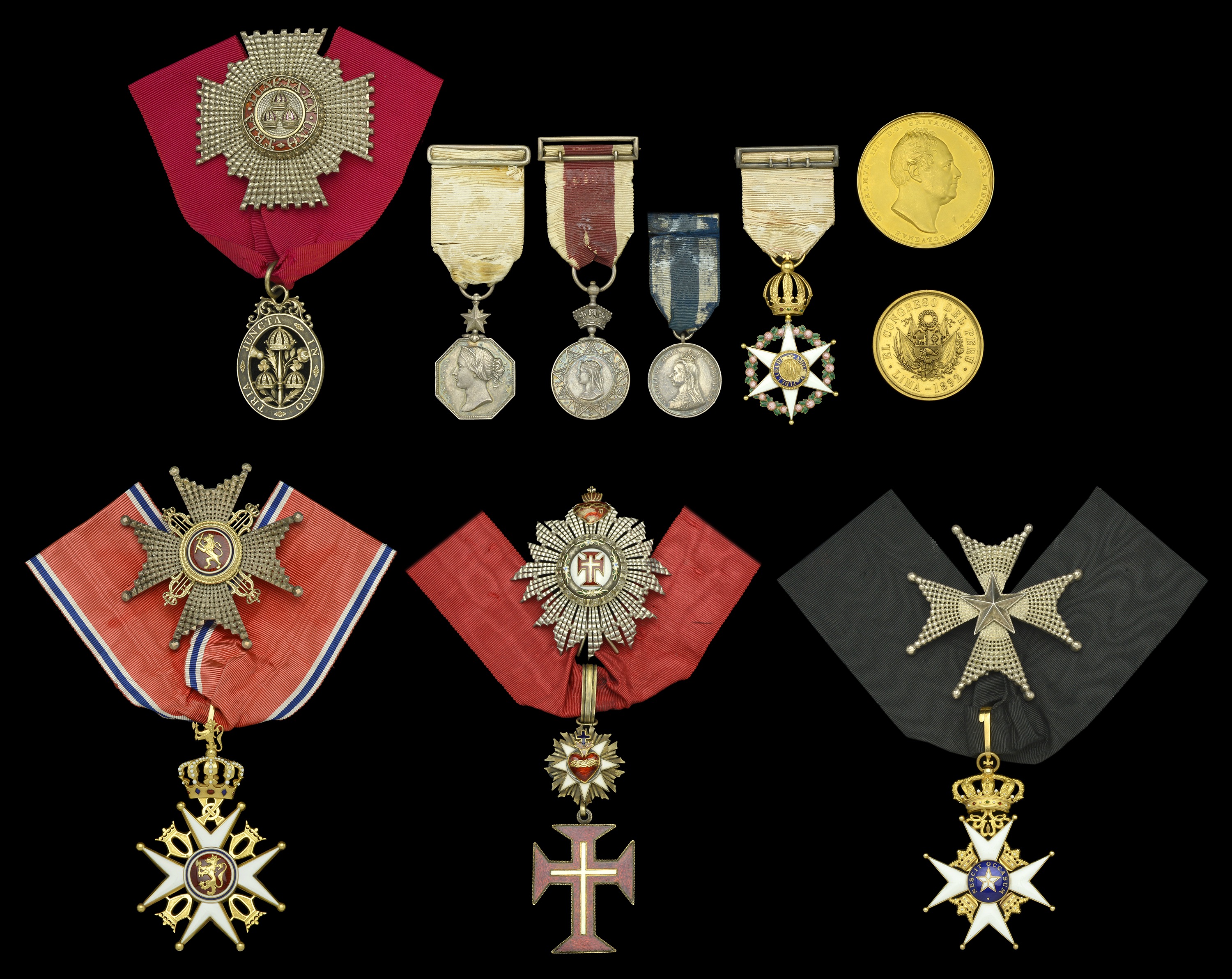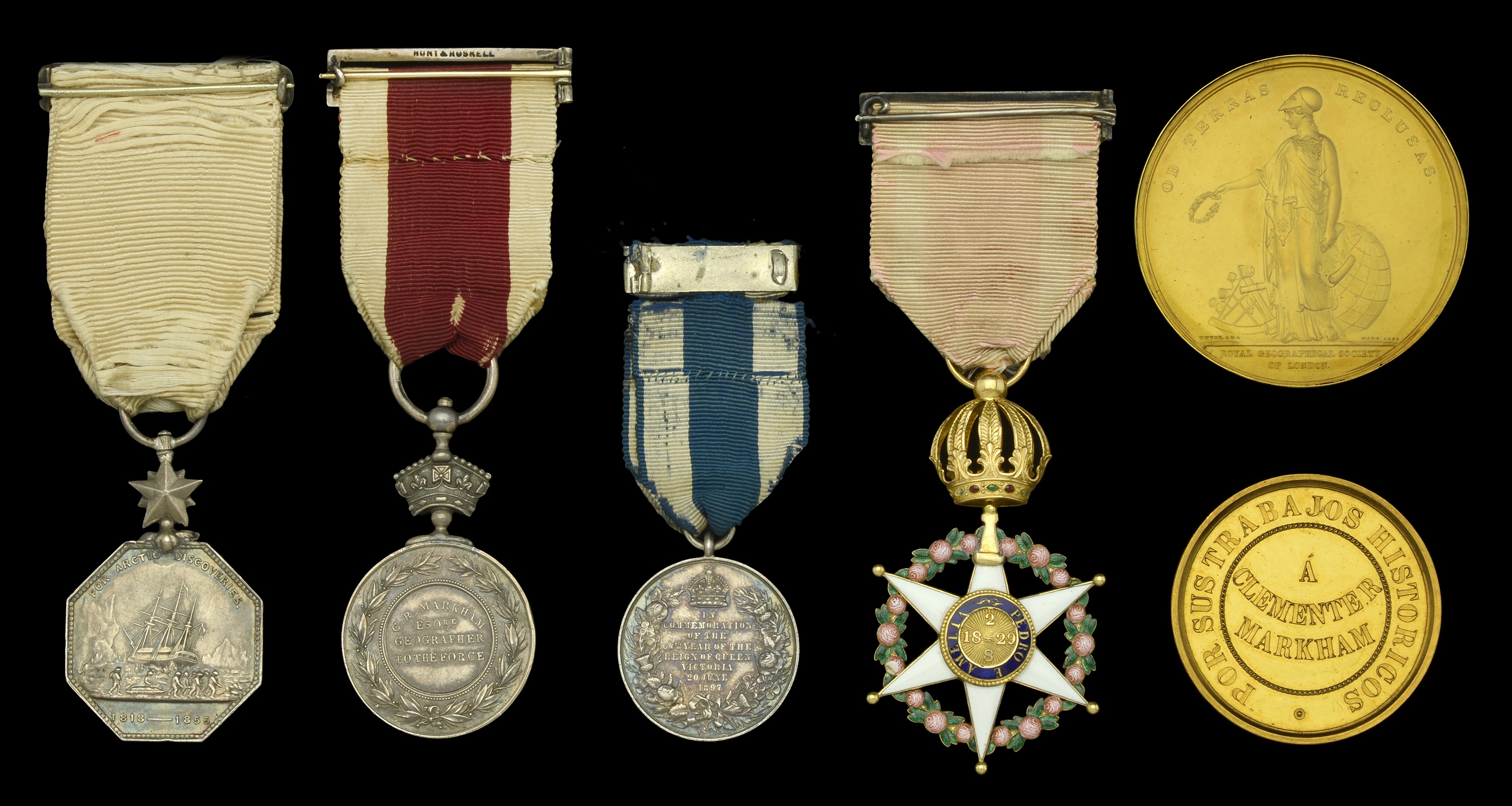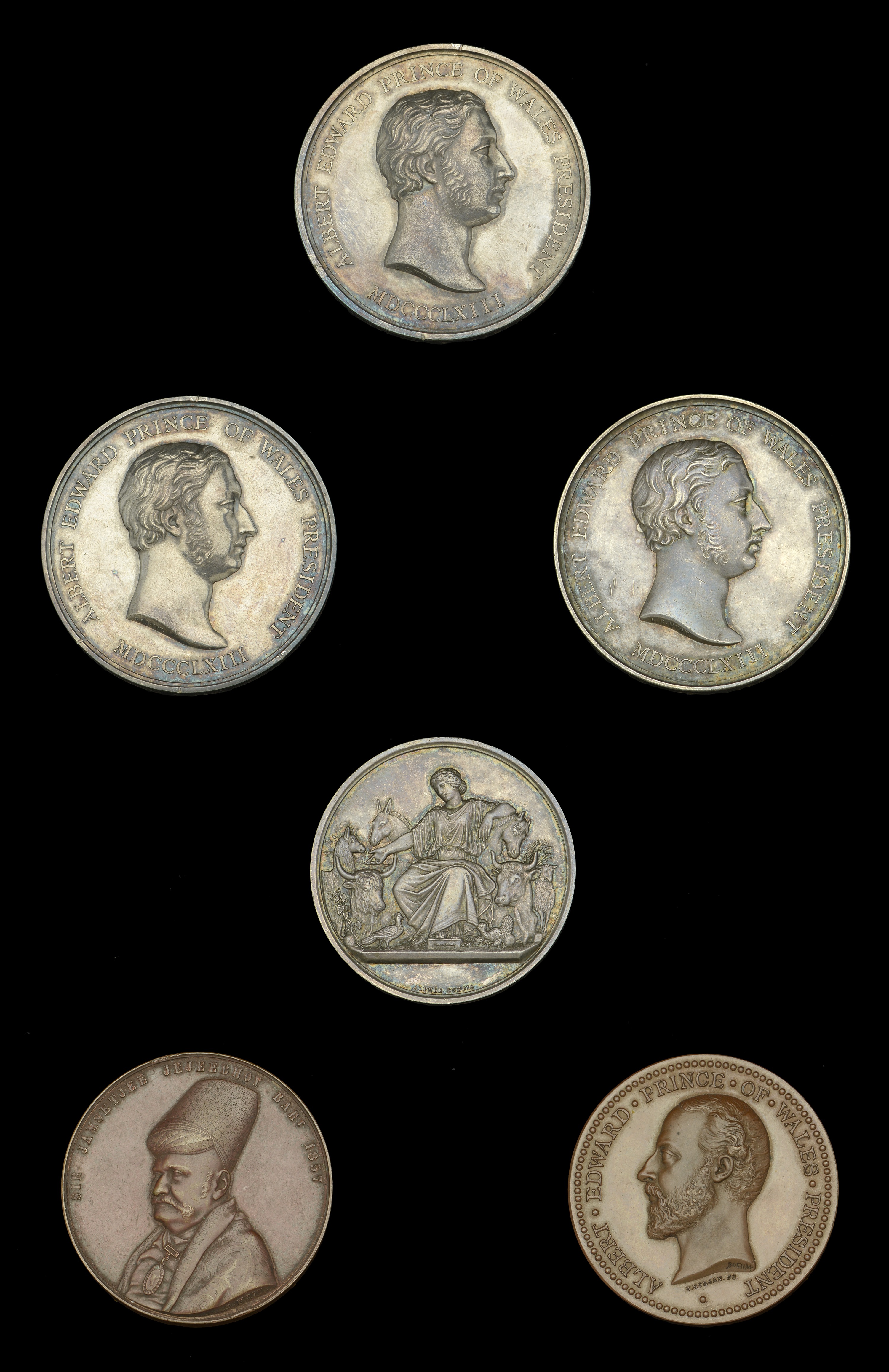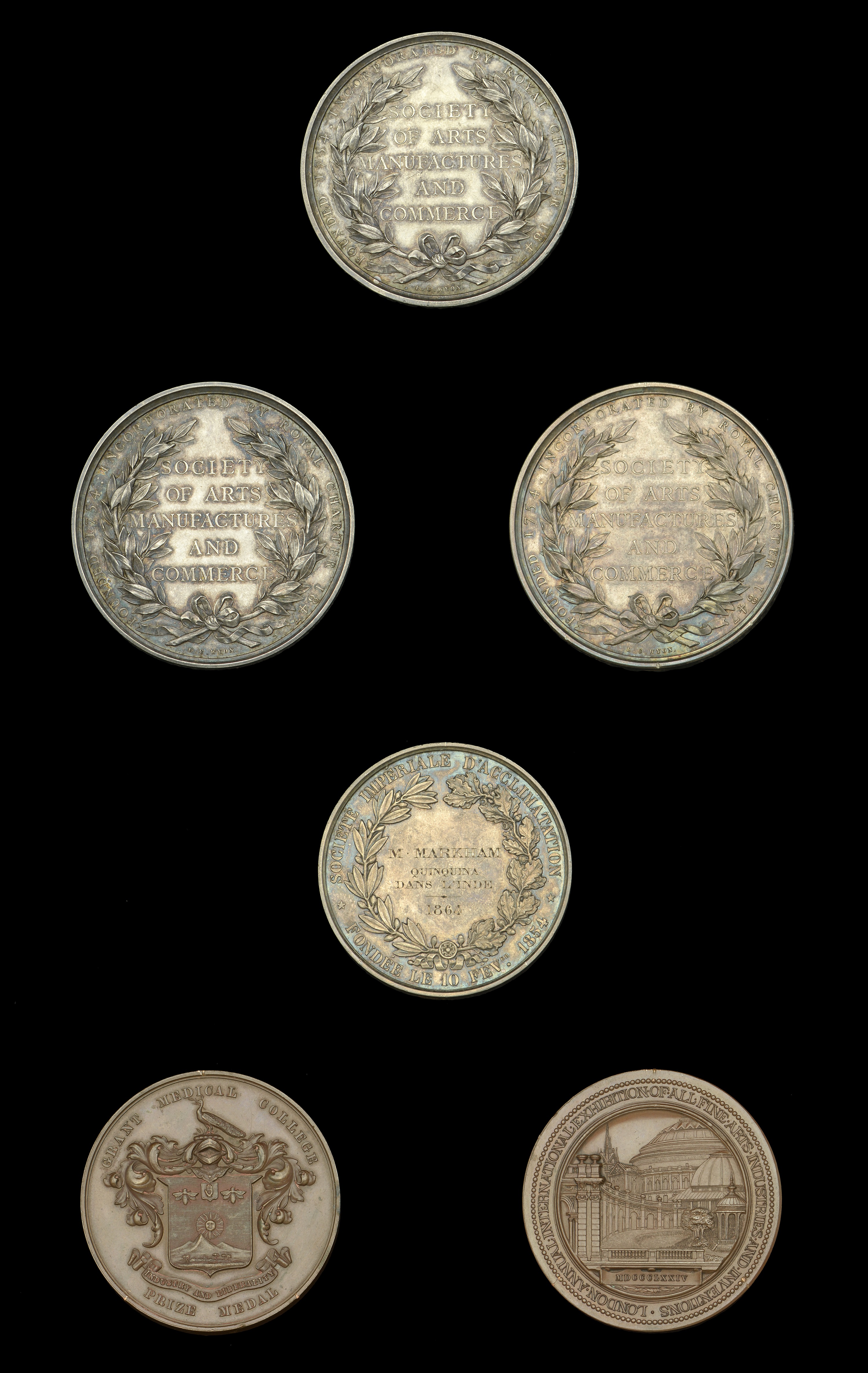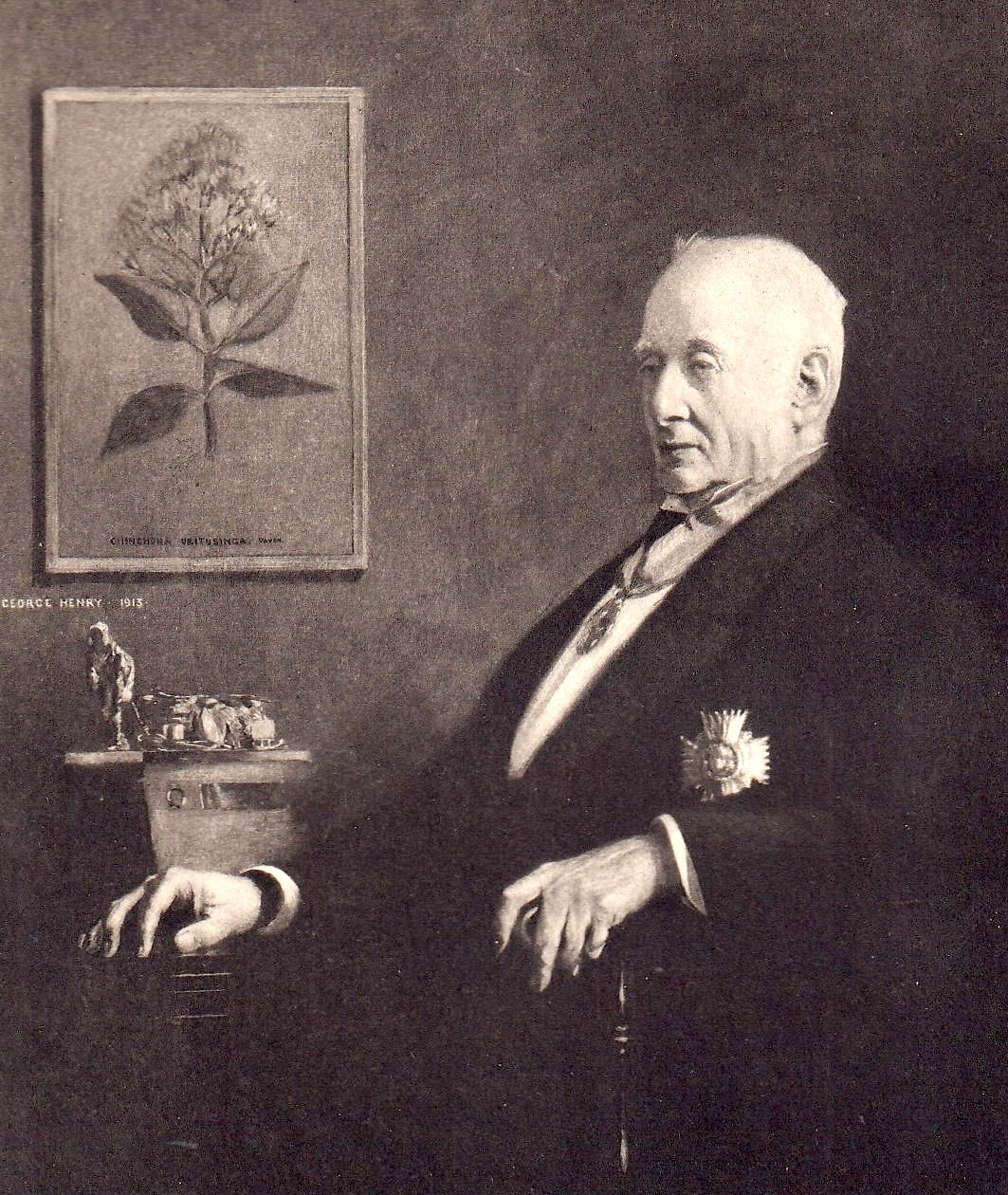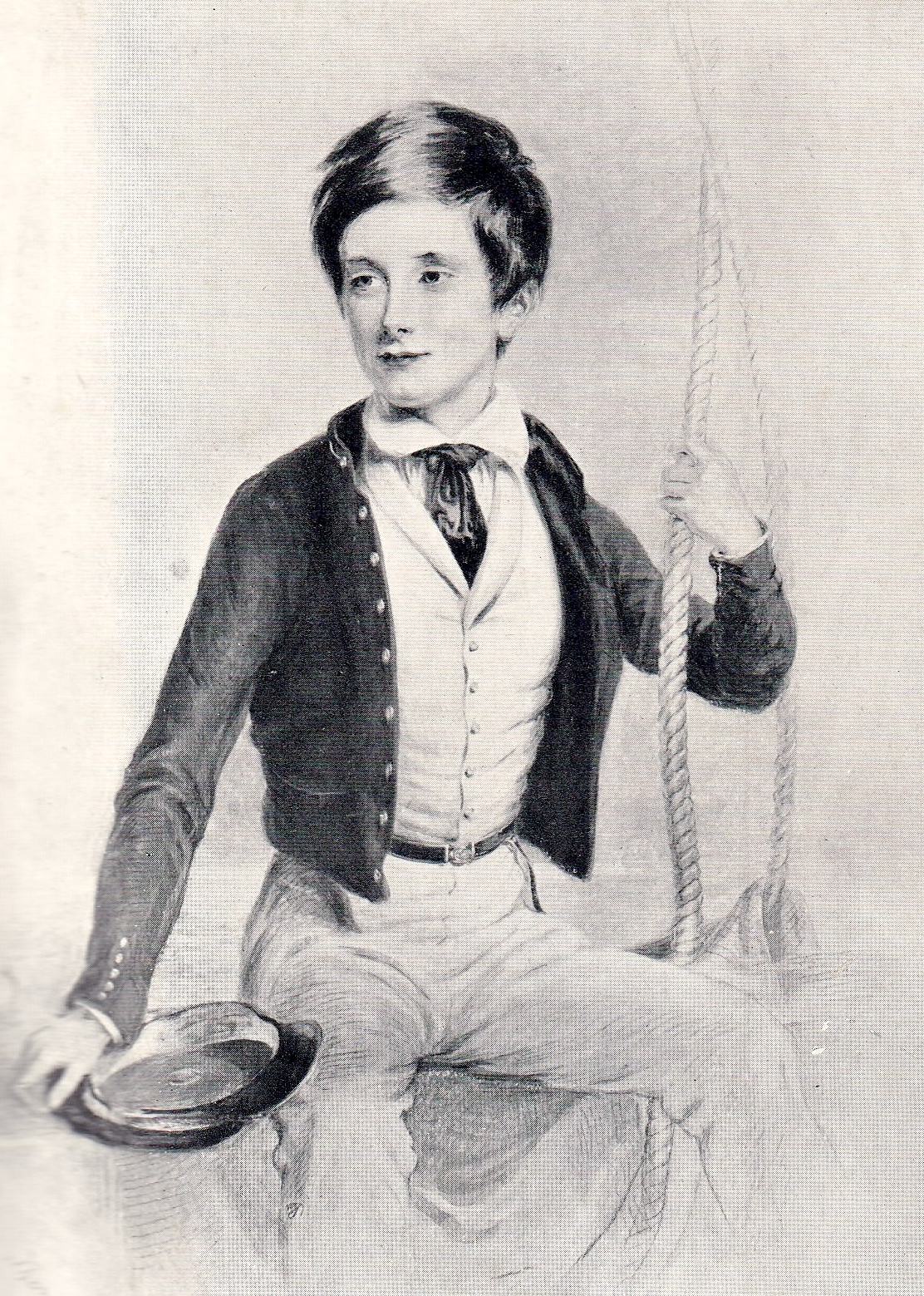The news of the death of Sir Clements Markham has been received with unanimous and unfeigned regret. His eminent services to Geographical Science, more especially to Polar Exploration, will live for all time. From the President of the French Geographical Society. The spectacular and historic group of sixteen Decorations and Medals awarded to Sir Clements R. Markham, K.C.B., F.R.S., who served as Geographer to the Abyssinian Expedition of 1867-68, and became known as the ‘Father of Polar Exploration’ The Most Honourable Order of the Bath, K.C.B. (Military) Knight Commander’s set of insignia, comprising neck badge, silver-gilt, hallmarked London 1895, and breast star, silver and silver-gilt; Abyssinia 1867 (C. R. Markham Esqre. Geographer to the Force) fitted with silver ribbon buckle; Arctic Medal 1818-55, unnamed as issued, fitted with silver ribbon buckle; Jubilee 1897, silver; Brazil, Kingdom, Order of the Rose, breast badge, gold and enamels, fitted with silver ribbon buckle, crown suspension neatly re-affixed; Portugal, Kingdom, Order of Christ, 2nd class set of insignia, comprising neck badge, silver-gilt and enamels, and breast star, silver, silver-gilt and enamels, one point of star neatly repaired; Norway, Order of St Olaf, 2nd class set of insignia, comprising neck badge, 2nd type, gold and enamels, and breast star, 1st type, by I. Tostrup, Kristiania, silver, silver-gilt and enamels; Sweden, Order of the North Star, 2nd class set of insignia, comprising neck badge, gold and enamels, and breast star, silver. Together with the following Society awards: 1. Royal Geographical Society, Founder’s Gold Medal, W.IV.R. obverse, 55mm, 128.68g (Clements R. Markham. 1888) lacking obverse glass lunette 2. Society of Arts Manufacturers and Commerce, silver medal, 56mm (To Clements R. Markham, for his paper “on the Tinnevelly Pearl Fisheries” 1867) 3. Society of Arts Manufacturers and Commerce, silver medal, 56mm (To Clements R. Markham, Esq., C.B., for his paper on “the Agricultural Statistics of India” 1875) 4. Society of Arts Manufacturers and Commerce, silver medal, 56mm (Clements R. Markham, C.B., F.R.S, for his paper on “the cultivation of Caoutchoue-yielding trees in British India” read 5th April 1876) 5. London Annual International Exhibition of all Arts Industries and Inventions, bronze medal 51mm (C. R. Markham C.B., F.R.S. for Services) 6. Grant Medical College, bronze medal, 51mm unnamed 7. France, Societé Imperial d’Acclimatation, Fondée le 10 Fev 1854, silver medal by Alphée Dubois, 50mm (M. Markham, Quinquina dans l’Inde 1864) 8. Congress of Peru, Lima 1892, Gold Medal, 45mm, 97.79g, specially struck reverse inscription (Á Clemente R Markham Por Sus Trabajos Historicos) [For His Historic Works], a few enamel chips but generally very fine or better (20) £40,000-£50,000 --- Importation Duty This lot is subject to importation duty of 5% on the hammer price unless exported outside the UK --- --- Sir Clements Robert Markham geographer and historical writer, was born at Stillingfleet, Yorkshire, on 20 July 1830. After two years at Westminster School, he entered the navy in 1844 and spent four years in H.M.S. Collingwood on the Pacific Station, mainly in South American ports, where he picked up a working knowledge of Spanish. Many things in the service were distasteful to him, but he remained in it for a further three years in order to join H.M.S. Assistance as a Midshipman under Captain Austin on his Franklin Search Expedition of 1850-51 (Arctic Medal). After a year of wandering (1852-53) among the Inca ruins of Peru, which made him a life-long friend of the Peruvian people, Markham joined the civil service, and in 1854 was transferred to the board of control of the East India Company. In 1860 he was charged with the collection of young cinchona trees and seeds in the forests of the Eastern Andes, and with the acclimatisation of the plants in India. The difficulties were great, but the result was a complete success, leading in time to the supply of quinine at a very low price. From 1867 to 1877 he had charge of the geographical work of the India Office. In 1868 he accompanied Sir Robert (afterwards Baron) Napier as Geographer on the Abyssinian Campaign. He was present at the capture of Magdala, and it was he who discovered the body of the Emperor Theodore (Abyssinian Medal). In 1871 he received the C.B., and in 1873 was elected F.R.S. Markham took an active role in promoting the revival of Arctic Exploration, and sailed in 1875 as far as Greenland with the expedition of Sir George Nares, on which occasion his cousin Sir Albert Hastings Markham was second-in-command. In 1877, he left the India Office and retired from official life, only to redouble his geographical and historical studies, travelling widely and writing incessantly. He had joined the Royal Geographical Society in 1854, and maintained a role as one of its honorary secretaries for 25 years (1863-1888). He became president of the society in 1893, and during his 12 years’ tenure he vigourously directed its policy of encouraging exploration and geographical education. He was frequently consulted by the government, on issues such as the difficult question of the boundary between British Guiana and Venezuela. He received the K.C.B. in 1896. For the next few years, Markham threw heart and soul into the promotion of Antarctic exploration, securing funds by urgent appeals to public and private sources. On the joint committee of the Royal Society and the Royal Geographical Society, which was responsible for the National Antarctic Expedition of 1901, it was Markham who selected Commander Robert Falcon Scott as leader, pressing his strong preference that the expedition should consist of naval men under the sole command of a naval officer, with a small civilian scientific staff. The expedition was highly successful, but Markham took little interest in later South Polar achievements (he was not a supporter of Shackleton) until Captain Scott planned the expedition in the Terra Nova in 1910, when his former ardour was rekindled. Captain Scott drew much of his inspiration and encouragement from Markham, and in one of his final farewell letters wrote, ‘Tell Sir Clements I thought much of him and never regretted him putting me in command of the Discovery.’ For many years, Sir Clements Markham’s reputation was established throughout the world as the leading British geographer and his achievements were recognised by his many awards, not least the gold Founder’s Medal of the Royal Geographical Society. Sir Clements Markham died in London on 30 January 1916. Amongst the many memorials is a bronze bust, presented by the government of Peru, which today stands guard at the portals of the Royal Geographical Society’s main entrance to Lowther Lodge in Kensington. Sold with a first edition of The Life of Sir Clements R. Markham K.C.B. F.R.S., by Admiral Sir Albert Markham K.C.B., London 1917.


















